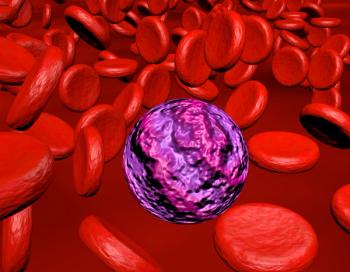
- Oncology Vol 29 No 4_Suppl_1
- Volume 29
- Issue 4_Suppl_1
(P007) Pooled Analysis of Locoregional Relapse After Minimally Invasive Surgery Alone for Intermediate- or High-Risk HPV+ Oropharyngeal Squamous Cell Carcinoma
In the HPV+ population, ECE remains a significant risk factor for LRR without adjuvant therapy after MIS. Patients with intermediate-risk disease after MIS have moderate rates of LRR.
Ryan K. Funk, MD, David G. Stoddard, MD, Kanograt Tangsriwong, MD, Michael G. Keeney, MD, Qihui Zhai, MD, Eneida F. Vencio, DDS, Alexander Lin, MD, Joaquin J. Garcia, MD, Eric J. Moore, MD, Robert L. Foote, MD, Katharine A. Price, MD, Daniel J. Ma, MD; Department of Radiation Oncology, Department of Otolaryngology, Department of Laboratory Medicine and Pathology, Division of Medical Oncology, Mayo Clinic; Department of Radiation Oncology, University of Pennsylvania; Department of Laboratory Medicine and Pathology, Mayo Clinic, Jacksonville, FL; Department of Oral Pathology, School of Dentistry, Federal University Goiás
PURPOSE/OBJECTIVES: Traditional risk factors predicting locoregional relapse (LRR) following surgery for head and neck squamous cell carcinomas were identified in the pre–human papillomavirus (HPV) era. Patients with HPV-positive (HPV+) oropharyngeal squamous cell carcinoma (OPSCC) present at younger age and have an approximately 50% reduction in death when compared with their HPV− counterparts. Minimally invasive surgery (MIS) (eg, transoral robotic surgery [TORS] and transoral laser microsurgery [TLM]) allows for improved intraoperative assessment of the tumor. It is unknown if traditional risk factors fully apply to the HPV+ population that undergoes MIS. We examined whether traditional indications for adjuvant radiation therapy (RT) (perineural invasion [PNI], angiolymphatic invasion [ALI], T3–4, or N2a–b) or adjuvant chemoradiation therapy (CRT) (extracapsular extension [ECE] or positive margins) also predict for LRR in patients with HPV+ OPSCC who undergo MIS alone.
MATERIALS AND METHODS: After institutional review board (IRB) approval, the medical records of patients treated with TORS (two institutions) or TLM (one institution) for OPSCC were reviewed to identify patients with HPV+ tumors who had indications for adjuvant therapy but did not receive adjuvant therapy. HPV status was confirmed by p16 immunohistochemistry. Individual data from all three institutions were pooled into a single database for analysis.
RESULTS: A total of 43 patients with HPV+ base of tongue (n = 16) or tonsil (n = 27) OPSCC with a median age of 60 years (range: 37–81 yr) who did not receive adjuvant therapy despite the presence of intermediate- or high-risk features were identified. Seventeen of 43 patients had a smoking history > 10 pack-years. Fourteen patients had ECE as an indication for CRT. Margins were close in all patients due to the nature of MIS, but the final margins were all negative. Intermediate-risk features were ALI (n = 4), PNI (n = 3), T3 (n = 6), N2a (n = 13), and N2b (n = 6). Three patients had two intermediate risk factors. Median follow-up after surgery was 30.1 months (range: 3.1–161.7 mo). Eleven of 47 (26%) patients developed LRR at a median of 5.7 months (range: 2.9–39.2 mo). Kaplan-Meier estimate of 2-year relapse-free survival was lower for patients with ECE vs patients with intermediate-risk factors only (43% vs 88%, respectively; P = .02). LRR was detected locally (n = 3, base of tongue), locally and in ipsilateral regional lymph nodes (ILNs) (n = 1), in ILNs alone (n = 4), in contralateral regional LNs (n = 2), or in bilateral neck nodes (n = 1).
CONCLUSION: In the HPV+ population, ECE remains a significant risk factor for LRR without adjuvant therapy after MIS. Patients with intermediate-risk disease after MIS have moderate rates of LRR.
Proceedings of the 97th Annual Meeting of the American Radium Society -
Articles in this issue
Newsletter
Stay up to date on recent advances in the multidisciplinary approach to cancer.


















































































